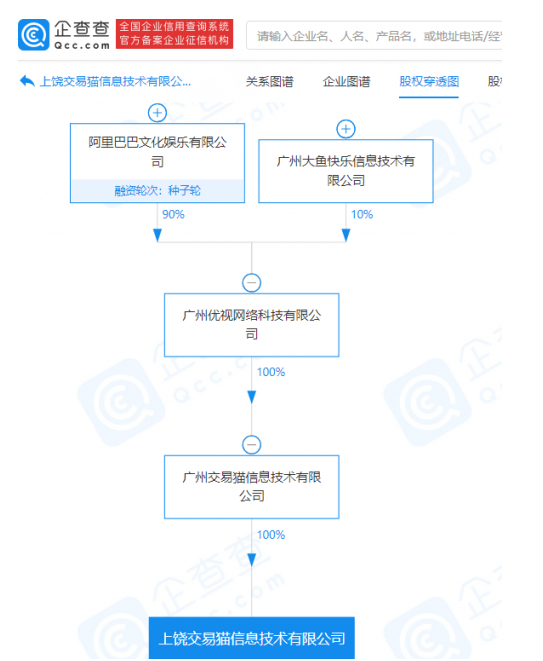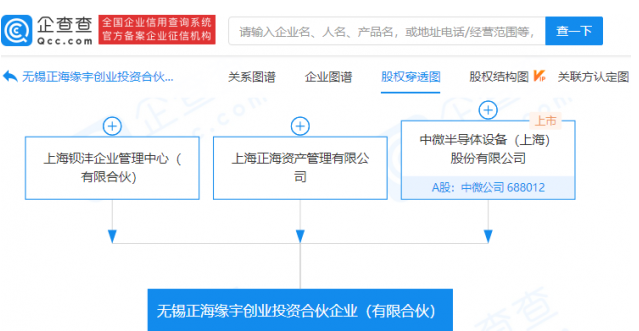人教版高一英语第三单元教案 环球信息
高一階段,是打基礎階段,是將來決戰高考取勝的關鍵階段,今早進入角色,安排好自己學習和生活,會起到事半功倍的效果。下面是小編爲你准備的人教版高一英語第三單元教案,快來借鑒一下並自己寫一篇與我們分享吧!
人教版高一英語第三單元教案篇1
一、教學背景分析
1. 单元背景分析
 (資料圖片僅供參考)
(資料圖片僅供參考)
隨著科學技術的發展,各種各樣新的發明和發現都層出不窮。生活在這樣一個知識爆炸的年代,學生們更應用心去體會並感受科技和發明創造者給生活帶來的變化,進而能聯想到他們平時所學的學科及知識,並用英語爲媒介進行知識的整合與串聯。同時從另一個角度來說,科技進步的同時,我們的社會也産生了各種各樣的矛盾與爭論,因此如何正確的看待或處理這些問題,也成爲廣大學生應該了解並掌握的知識。
2.學生情況分析
本單元的設計與實施是建立在學生經過高一上半學期新教材學習基礎之上。學生已經逐步的適應了在活動與任務中學習英語以及如何處理語言知識與活動開展的關系。並且,他們也已經形成並培養了一定的小組合作學習及自主學習的能力。
二、教學目標分析
語言技能
聽:在聽懂教師向學生講述實驗中注意事項基礎上,繼續學習並強化捕捉特定信息的能力,以及確定全文主要話題的概括能力。
說:應能在了解一定的現代科技發明基礎上,思考並學習如何對一種新的事物進行描述。同時能與他人進行交流,敘述事物的利與弊端。
讀:強化略讀、查讀等閱讀微技能,訓練通過尋找關鍵詞,主題句等方式更快速並准確的確定文章的段落大意,理清文章的總體框架與脈絡。繼續運用已經掌握的基本猜詞技巧猜測部分單詞,並在上下文體驗中感受某些佳句給讀者帶來的深層含義。
寫:學習在對事物進行理性思考的基礎上,運用恰當的句型與詞彙描述對事物正反面的不同觀點,同時更應注重掌握一些必要的過渡詞增加此類寫作的條理性與層次感,並應熟悉議論性作文的基本寫作框架。
情感態度與文化意識
(1)進一步培養小組合作學習的能力,通過調查、采訪、討論等活動完成任務,取長補短,加強團體協作意識。
(2)引導學生用英語進行不同學科特點的思考,體會學科之間的聯系與區別。通過話題啓發學生積極思考,調動學生的學習興趣。
(3)指導學生用批判的思維去接受新的事物,增強他們的辯論意識與能力。
(4)意識到科技工作的艱苦以及所必需的個人品質與素質,鼓勵學生在學習過程中的創新精神與實踐能力。
語言知識
词汇:学习并使用一些与science 和scientists有关的词汇。
語法:進一步了解一詞多義現象與合成詞的構成。
功能:學習如何就某一事物給予別人指導與說明。
話題:掌握有關實驗說明的話題表達以及如何從正反兩方面對某一話題進行分析討論。
學習策略
指導學生運用已學會的抓重點、做記號、摘筆記等方式對所學內容進行整理與歸納,並鼓勵學生增加與教師和同學交流、合作,繼續培養正確的自我評價與相互評價的習慣,從而總結交流學習所得,進一步形成有效的學習方法。並指導學生把英語學習從課堂延伸到課外,發揮已掌握的使用工具書,查找資料、上網等方式增加用英語思維與表達的能力,了解實驗對于科學研究的重要性,樹立正確的向上的學習態度,形成具有批判性的看問題習慣。
三、教學內容分析
本单元的中心话题是science and scientists。话题依附于听力、对话、阅读与写作等语言载体中。本单元的话题内容与学生的日常学习有着密切的关系,应该说是以英语为媒体让学生表达他们对平时理化生等理科课程,特别是相关实验,所想到及感受到的内容。因此,尽管本单元的话题对学生而言有着一定的难度,但却有体现出了以学生为中心,贴近学生生活而又富有时代气息的特点。
Warming up设计了四幅与学生的理科课程有关的图片,学生通过对日常熟悉的相干实验工具及场地的识别,展开相关学科特点与学习的讨论。同时在此基础上,要求学生们在Listening部分能熟悉某些实验室的规则及注意事项,掌握如何给予别人指导与说明,并能抓住文章的中心话题,捕捉相关细节内容,回答有关的问题。
Speaking则是一个极富时代气息的讨论练习。要求学生们能对现在热门的尖端科技有所了解,(练习中提供了诸如Maglev train, cloning, nuclear energy, computer 与 space flight等内容)然后能就这些新的科学技术与工具进行理性的辨证的思考,既能感受到它们给我们的生活带来的巨大利益,同时也能发现其中所存在的不足与弊端,并能通过讨论、对话等形式发表自己的观点与想法。这一部分也应该是本单元写作内容的一个铺垫。
Reading讲述的是科学家 Franklin的风筝实验,从而证明Lighting and electricity are the same的故事。学生在理解文章的基础上,能充分感受到实验对于科学工作的重要性及科学家是如何获得事业上的成功的。同时能落实材料中所出现的一些单词与短语的使用。
Language Study是在本单元词汇学习的基础上,让学生进一步了解并掌握一定的构词法。主要是兼类词、一词多义现象及合成词的构成。
Integrating skills 通过学生对科学家是否应利用动物进行实验,从而达到发明新产品现象的讨论,理性的从正反两个方面看待这一问题。同时在阅读、思考与讨论的基础上,写下一篇阐明自己观点、立场与看法的短文。
人教版高一英語第三單元教案篇2
一、教學設計意圖
在《高中英语新课程标准》中讲到“高中英语课程要有利于学生优化英语学习方式,使他们通过观察、体验、探究等积极主动的学习方法,充分发挥自己的学习潜能,形成有效的學習策略,提高自主学习的能力;要有利于学生学会运用多种媒体和信息源,拓宽学习渠道并形成具有个性的学习方法和风格。”把信息技术作为英语教学的认知工具和知识载体,围绕英语学科知识进行整合实验,不仅可以扩大英语阅读的“面”和“量”,而且也培养了学生诸如“信息的获取、信息的重组和加工以及信息的交流”等多种信息素养。网络学习是一种学习过程交互化的学习模式。学生带着问题借助网络查询信息,进行信息交流,由此“任务驱动、自主探究、协作交流”等學習策略在这里得到了更充分的体现。使教师把信息技术和网络作为自己真正的工具,把信息技术融入学科教学中来。
二、教學目標設計:
知識與技能:①掌握快速閱讀的方法,熟悉“發表看法,提出建議”的口語技能。②充分利用網絡資源,強化學生自主學習的意識,培養學生組織語言、運用語言的能力。
過程與方法:①培養學生篩選局部和整體信息的能力和獨立閱讀能力,通過自主學習和協作學習,獲取信息和處理信息的能力。②培養學生質疑意識,分析問題、解決問題、綜合問題的能力和創造性思維能力。
情感價值觀:通過本節課的學習,培養學生的人文和信息素養。
三、教材內容及重點、難點分析:
教材内容:本课教学内容是新课标《高中英语必修3 Unit 5》,Canada---The True North 与以往接触过的介绍国家的文章相比,本课的内容没有整体介绍加拿大的地理概况和风土人情,而是透过一个旅人的眼睛来看加拿大。相比较而言,这样的课文难度更大。
教學重點:①對課文內容的整體把握。②學生組織語言、運用語言的能力。
【重點突破】任務驅動,層層深入。利用“任務驅動”方法,使學生利用資源自主探究、解決一系列層層深入的問題。在教學中,教師作爲問題的精心設計者和疑難問題的點撥者,培養學生組織語言的能力。
教学难点:①对课文内容中细节的理解。②对网上各种信息源的比较筛选,及学生易受无关因素的干扰而导致的学习效率问题。【难点突破】 设置情境,循序渐进,层层递进。设置富有情趣的情境,激发他们的阅读__,积极主动地进行自主探究。循序渐进的"设计问题 , 激发学生的创造思维,层层深入地引导学生进行自主和协作学习。
四、教學策略及教法設計:
教學策略①本節課的教學以建構主義學習理論爲指導,以學生爲中心,以問題爲出發點,使課堂教學過程成爲學生自主地進行信息加工、知識意義構建、創新能力發展的過程。教師在教學過程中則適時介入,引導、啓發、組織、幫助、促進。②設計創造性思維問題。所謂創造性思維問題即是指有利于學生創造性思維發展的問題。創造性思維問題的設計應遵循這樣幾個原則:題型具有開放性、解題富有挑戰性。
【教法】:①演示法:把制作的課件、動畫等顯示給學生看,便于學生對微觀知識的把握,並從舊知中獲得啓迪,從而解決問題。②評價閱讀法:將學生通過對材料的收集、整理和內化而形成的學習成果,在全班學生中展示,使學生獲得成功的喜悅,從而激發學生的後續學習熱情。③任務驅動教學法:將所要學習的新知識隱含在一個或幾個問題之中,學生通過對所提的任務進行分析、討論,並在老師的指導、幫助下找出解決問題的方法,最後通過任務的完成而實現對所學知識的意義建構。
五、教學過程設計:
第一步:熱身活動:猜單詞。在這個步驟中,我給出兩組前一節課學過的詞,分別讓兩組同學上來猜。所采用的方式類似于《幸運52》:單詞是出現在屏幕上的,其中一個同學背對著屏幕,他是猜者;另一個同學則是解釋者,他要用英語或輔以動作將單詞的意思表現出來。兩組同學之間展開競爭,看誰猜得又快又多。這個活動不僅可以複習上節課的內容,更重要的是活躍了課堂氣氛,令同學們很快融入課堂氛圍。
第二步:读前活动(一):自由展示。在上这一课之前,我给学生布置的预习任务是介绍你最想去的地方。Which country or place would you like to visit most? Why?学生们自由组成小组,上网查找相关资料,然后对所搜集的信息进行整理,最后形成自己的powerpoint展示文件。在课堂上,由本小组的发言代表上来进行展示和介绍。这一环节是这节课的重头戏。
第三步:读前活动(二):自由交谈。给学生提出这样一个问题:如果你有机会去加拿大,你最想看什么?If you have a chance to visit Canada, what would you expect to see there? 先要求他们在小组内讨论,然后再在全班同学面前发言。
第四步:读前活动(三):小组讨论。经过了前面的大量的有关加拿大的信息的冲击,你愿意用哪三个词语来描述加拿大?What three words would you use to describe Canada? Why? 请小组代表发言。
第五步:加拿大概况综述。这一步骤是对上几个步骤的总结,同时也是教师整合并优化了有关加拿大的各种信息所进行的展示。目的是进一步加深同学们对加拿大的了解,对他们所获取的知识进行 梳理,也为下一个步骤展开铺垫。
第六步:略读课文。(first reading)在这个步骤中,我给出了8个问题,让同学们带着这8个问题来阅读课文。读完后回答问题。
1.Why are the cousins not flying direct to the Atlantic coast?
2.What is the continent they are crossing?
3.What is “The True North”?
4.Why do many people want to live in Vancouver?
5.What happens at the Calgary Stampede?
6.Where does wheat grow in Canada?
7.Why would ship be able to reach the centre of Canada?
8.Name two natural resources that Canada has.
第七步:精读课文。(second reading) 在这个步骤中,我给出了5个跟课文内容有关的句子,让同学们判断正误。如果该句是错的,请给出正确答案。
1.The girls went to Canada to see their relatives in Montreal.
2.Danny Lin was going to drive them to Vancouver.
3.You can cross Canada in less than five days by bicycle.
4.The girls looked out the windows and saw Native Indians and cowboys.
5.Thunder Bay is a port city in the south of Canada, near Toronto.
第八步:复述课文(retelling) 给出课文中的关键词汇,让同学们用自己的话来复述课文。
Helpful words and expressions
great scenery
second largest
go eastward
mountains/lakes/forests/rivers
5,500/from west to east
here in Vancouver
surrounded by
ski/sail
第九步:口头作文(oral practice) 设定一个情境,给出一些关键词汇,让同学们模仿课文来编一段对话或一篇短文。
Suppose two of your cyber pals in Canada come to visit Shenzhen and you are meeting them at the airport. While you are driving them home, you are telling them something about China and Shenzhen, just as what Danny Lin said in the text.
Work in groups. You are required to present either a short passage or a short dialogue.
Helpful words and expressions
great scenery
third largest
go northward
mountains/lakes/forests/rivers
from south to north
here in Shenzhen
along the coast
theme parks
第十步:作業布置。要求學生將第九步中的口頭作文寫出來,變成書面作文。
Write down the short passage or the short dialogue that you’ve just worked out.
人教版高一英語第三單元教案篇3
Ⅰ. Teaching Basis (教学依据) :《普通高中英语新课程标准》
Ⅱ. The Type of the Text (课型) :Revision (复习课)
Ⅲ. Teaching Methods(教学方法): Question-based method(提问式),Group discussion
method(小组讨论法),Cooperative learning(合作探究),Practicing(练习).
Ⅳ. Teaching Aids (教学手段) :Multimedia computer(多媒体电脑),Learning
paper(導學案),Blackboard(黑板).
Ⅴ. Teaching Aims(教学目标) : ①Knowledge aims(知识目标):
words: achievement, specialist, organization, hard-working, confident….. phrases: put to death, mean doing, either…or…, the bond between……, structure: only+…., It is/was+….+that…. grammar: Subject-verb agreement.
②Ability aims(能力目标): Develop the students’ ability to use the important
language points, enable students to describe people using the adjectives.
③Emotional aims(情感目标): Encourage the students to think about what makes a
person great.
Ⅵ. Teaching focuses(教学重点):Get the students to review and consolidate what they
have learned in this unit.
Ⅶ. Teaching difficulties(教学难点):Get the students to turn what they have learned into
their ability.
Ⅷ.Teaching procedure(教学过程): Step 1 复习学案情况反馈(1分钟)
Step 2 lead-in :通过图片展示的方式,过渡到知识竞答类节目《一站到底》,本节课也将模仿这种模式授课。依次介绍本节课的竞答规则:
本此活動分爲五輪淘汰賽,全班共八個小組,每個小組推薦一名選手(作爲本組站神)進行參與:
→→第一輪采用記單詞的方式,進行車輪大賽,最終淘汰掉一個小組,剩余七個小組成功晉級第二輪,成功晉級的小組將獲得5分,加入到本組的總量化分數中;
例:
1. n.成就,功绩 _______________________ 7 .n. 巢,窝 ________________________
2. n.福利,福利事业 _________________ 8..n. 联系,关系,结合,纽带_________ 3. n,项目,工程,规划 _________________ 9. n. 观察,观测,遵守 ______________ 4. n.学会,学院,协会 _________________ 10. n. 童年,幼年时期 ________________
???.
→→第二轮节采用记短语的方式,在成功晋级的7个小组中进行车轮赛,最终淘汰掉两个小组,剩余5个小组成功晋级第三轮,成功晋级的小组将获得的分数为上一轮得分的二倍(即5__2=10); 例:
1.过着…的生活 ____________________ 6 .离开,启程,出发 ________________ 2.涌上心头,涌入脑海 ______________ 7.藐视,瞧不起 ___________________ 3.查阅,参考,谈到 _______________ 8. 碰巧,凑巧 ___________________ 4.偶然遇见,碰见 ________________ 9 继续,坚持 ____________________
???
→→第三轮采用背诵句子的方式,在成功晋级的5个小组中进行车轮赛,最终淘汰掉三个小组,剩余两个小组成功晋级第总决赛,并且这两个小组均获得一次免答权,这两个小组将获的分数为上一轮得分的二倍(即10__2=20); 例:
(1)她的一生全都奉獻給了中國婦女和兒童的醫療事業。
She (2)这意味着我们要返回前一天晚上我们离开时黑猩猩一家睡觉的大树旁。;
back to the place we left the family sleeping in a tree (3)简预先提醒我们,到下午的时候我们就会又脏又累,她说对了。
(4)她母親頭幾個月來幫過她的忙,這才使她得以開始自己的計劃。
begin her project.
(5) 比方说,她的一个重要发现是黑猩猩猎食动物。
was that chimps hunt and eat meat. ???
→→第四轮为复活赛,在前三轮车轮赛中被淘汰的6个小组,均可获得一次复活机会,但是复活赛的要求非常苛刻,每个参赛的小组必须能够正确背出随机指定的3个句子,8个短语,10个单词,如能成功过关,将直接晋级总决赛,但不享有免答权;假如没有成功过关,所有分数将清零。 例:
(1)她的一生全都奉獻給了中國婦女和兒童的醫療事業。
speakers.
A. go on B. carry on C. carry out D. work on
3. The new equipment ________ the disabled during the 2008 Beijing Paralympics. A. was intended for B. was intended to C. intended for D. intended to
4. He was an ________ poet at that time and his _____ poems spread through all the country. A. inspired;inspired B. inspiring;inspired C. inspired;inspiring D. inspiring;inspiring
She (2)这意味着我们要返回前一天晚上我们离开时黑猩猩一家睡觉的大树旁。;
???
注意事項:(1)小組加分不累計。
(2)前三輪車輪賽中,每次選手必須更換,從第四輪開始可自由安排,各
小組相互監督,如有違規取消其參賽資格及所得分數。
(3)每轮车轮赛中间设1-2分钟准备时间。 (4)参赛选手在准备时间内抽取答题顺序。
设计意图:(1)增加学习的趣味性,提高学生的参与度,提高课堂效率。 (2)培养团队协作能力,增强竞争意识。
(3)尝试一种新的模式,改变英语课堂的沉闷现状。 Step 3 Summing up (总结):
Step 4 Homework :(1)写作专题突破, 根据提示用英语写一篇介绍宋庆龄的短文。
(2)Review and summarize what you have learned in Unit 1. (3)Preview the next unit.
Step 5 Blackboard Design (板书设计):
back to the place left the family sleeping in a tree (3)简预先提醒我们,到下午的时候我们就会又脏又累,她说对了。
and she is right.
1.与某人联系______________________ 2.计算出,得出 _____________________ 3.大胆的说,直率的说______________ 4.迫不及待做某事____________________ 5.获得博士学位____________________ 6.为了某人 _________________________ 7.为什么不呢______________________ 8.大学入学考试(高考)______________ 1 .vt&vi. 举动,表现________________ 2 .vt. 观察,观察____________________ 3. vt&n. z尊敬,尊重,敬意_________ 4 . vt&vi.讨论,争辩,辩论___________ 5. vt.鼓舞,激发,启示_____________ 6 .vi.谈到,查阅,参考_______________ 7. vt,计划,打算 _________________ 8.vt 递送,生,接生,发表___________ 8.adj.直言的,坦诚的_______________ 10. adj.值得的,值得做的______________
……….
→→第五輪爲總決賽,所有進入的總決賽的小組,將隨機抽到一個單選題目,請在20秒的時間內給出答案,並進行解釋說明,如果回答錯誤將直接被淘汰。直到剩余最後一個小組,最後的勝利者的小組將獲得“站神”的稱號,並將獲得全場分40分。
人教版高一英語第三單元教案篇4
(1)課題:Friendship
(2)教材分析与学生分析: 本单元的中心话题是“友谊”,几乎所有的内容都是围绕这一中心话题展开的。Warming Up部分以调查问卷的形式引导学生了解日常生活中朋友之间发生的真实问题以及解决这些问题的方法;Pre-Reading部分的几个问题启发学生对“友谊”和“朋友”进行思考,使学生明确不仅人与人之间可以做朋友,日记也可以成为人们的朋友;Reading部分Anne’s Best Friend以日记形式讲述了犹太女孩安妮的故事;Comprehending部分通过连句、多项选择和问答形式帮助学生对课文内容、细节进行更深入的理解; Using about Language 部分教学本课重点词汇和重点语法项目。
(3) 课时安排:The first period: Speaking: Warming Up and Pre-Reading The second period: Reading
The third period: Grammar
The forth Period:Listening
The fifth period: Writing
(4)教學目標:
①知识与技能:Talk about friends and friendship; Practise talking about agreement and disagreement, giving advice and making decisions; Use direct speech and indirect speech; Learn to write an essay to express and support an opinion.
②过程与方法:本单元在读前阶段就提出问题,让学生思考是不是只有人与人之间才能交朋友,然后在阅读中通过安妮的日记向学生说明我们也可以与动物及无生命的日记交朋友。在深刻理解、充分训练的基础上,可以再引导学生深入讨论几个与本单元话题有关的问题:1.描述朋友; 2. 结交网友;3. 观点交流;4. 善不善交朋友; 5. 朋友的重要性。
③情感態度與價值觀:學完本單元後要求學生進行自我評價,主要評價自己在本單元中的學習情況。對書中的內容是否感興趣,有哪些收獲,解決了什麽問題。使學生加深對友誼、友情的.理解,以及如何正確交友,處理朋友之間發生的問題等。
(5) 教学重点和难点:
词汇:add point upset ignore calm concern cheat share reason list series crazy nature purpose dare thunder entirely power according trust suffer advice situation communicate habit
短语: add up calm down have got to be concerned about go through hide away set down on purpose in order to face to face according to get along with fall in love join in
重点语法项目: 直接引语和间接引语的互相转换
难点:Understand the real meaning of friends and friendship;
Discuss the answers to the questions (Reading);
How to teach the Ss to master the usage of Direct Speech and Indirect
Speech(Statement and Questions).
(6) 教学策略: Discussion, Student-centered vocabulary, learning, listening, pairwork, teach grammar in real situation
(7) 教学煤体设计: A projector and a tape recorder.
(8) 教学过程:
Period One:Speaking (Warming Up and Pre-Reading)
Aims
Talk about friends and friendship.
Practise talking about agreement and disagreement.
Step I Revision
Ask some of the students to read his / her composition for the class, describing one of the problems between friends and how it is solved. Then give some comments.
T: Now, let"s check up your homework for last class. I"d like some of you to read his / her composition for the class, describe one of the problems between friends and how it is solved.
Step II Warming up
T: / think most of us have some good friends. Do you know why people make friends with one another?
Step III Talking(WB P41)
First get the students to listen to what a Canadian say about making friends. Then ask them to discuss the two questions.
T: Now we"re going to listen to what Leslie Clark, a Canadian has got to say about making friends. After listening, please talk about the two questions in groups of 4. Try to use the following expressions.
1 Do you agree with her?
2 What do you think of people from foreign countries?
Agreement Disagreement
I think so, I don"t think so.
I agree.I don"t agree
That"s correct.Of course not.
That"s exactly my opinion. I"m afraid not.
You"re quite right. I don"t think you are right.
Step IV Speaking(B P6)
First, get the students to think of four situations among friends in groups of 4 and design a questionnaire to find out what kind of friends their classmates are. Second, try it out on their own group, checking the questionnaire through and adding up their score and see how many points they can get. Ask them to fill in the form prepared before class. Show the instructions and decide what kind of friends their classmates are. Third, ask each student to stand up and walk around the classroom to make a survey on four of other classmates. Show the instructions and decide what kind of friends other classmates are. They can share your questionnaire with one or two other groups and try each other"s questionnaires.
At last, show the instructions to help your classmates to know how to improve his or her skills of making good friends with others if necessary.
T: Friends come in many flavors. There are best friends, school friends, fair-weather friends, forever friends and many more. Do you want to know what kind of friends your classmates are? Now let"s make a survey. First, please think of four situations among friends and design a questionnaire to find out what kind of friends your classmates are.
1. Your friend borrowed 100 Yuan from you last week and hasn"t returned it. You will
A. ask him / her to pay back as soon as possible; or you"ll end the friendship.
B. ask him / her to pay back if he / she has.
C. tell him / her not to return it.
2. Your friend said your bad words behind you. You will
A. ask him / her to say sorry to you , or you"ll stop your friendship.
B. excuse him / her and forget it.
C. ask others to tell him / her that he/she is wrong.
3. You promised to meet your friend at five o"clock but your parents ask you to do homework at home. You will
A. tell him your parents ask you to do homework at home.
B. tell him / her a lie that you are ill.
C. say sorry to him / her and plan to meet him / her another time.
4. You borrowed a bike from your friend, but you had it stolen. You will
A. buy a new one which is the same as his / hers.
B. just tell him / her you had it stolen.
C. say sorry to him/her and buy him/her an old one
After they finish choosing the answers, show the scoring sheet on the screen.
Instructions:
2-5 A fair-weather friend
Only like them when they are happy and popular. If they are feeling down, or if they are having a problem, you don"t want to spend time or talk with them. You don"t help your friends when they have problems. You are always thinking about yourself.
You should care more about your friends. If you continue to be self-centered and don"t consider others" feelings, you won"t make more friends and keep friendship for long.
6-11 A school friend
You see each other in school. You just study and play with them together in school. You may not know everything about each other. You take things smoothly. You seldom hurt your friends with your benefit considered. You"d better add more affection to your friends. Friendship is about feelings and we must give as much as we take.
12-17 A best friend
You do everything together with your friends: study, read, watch TV, surf the Internet, play sports and listen to music. If either one has a problem, the other is there to help. You know your friends very well. You understand and yield to each other. You help with each other and improve together. You have a lot of common benefit. Your friendship is good to both of you. You are mutually beneficial.
18-21 Forever friend
You will always listen to your friends and try to help them, even if you disagree or if you are having a problem. Whenever they have any difficulty, you"ll try your best to do what you can to help them without hesitation. You devote yourself to your best friends. You are willing to lose what you have, even your life.
課後反思:本課教學設計容量和密度較大,但難度適中,大部分學生都能接受。體現全面照顧大部分學生的教學理念。注意培養學生開口說英語的的信心。
人教版高一英語第三單元教案篇5
一.教学目标:(Teaching ais)
Finish the exercises n the wrb
1.能力目标:(abilit ai)
a) Enable the students t cand “cands and requests”
b) Thrugh cperative wr find ut crrect answers theselves
2.语言目标:(language ai)
Full understanding f the readings
二.教学重难点(Teaching iprtant pints)
Understanding the ain ideas f the passages
三.教学方法(Teaching ethd)
a. Fast and careful reading
b. Individual, pair r grup wr t finish each tas
c. Discussin
四.教具准备(Teaching aids)
a cputer
五.教学步骤(teaching prcedure)
Step 1.waring up
Step 2: speaing tas (Review cands and requests)
Offer the situatins and tr t ae dialgues with cands and requests
Step 3 :D the “Reading” n P13 and answer questins n it briefl.
Step 4: Finish the “Reading Tas” at p.51 and cplete the fr after it.
Step 5: Grup wr:
As the t su up what cdes and shrt frs f wrds the ften use when the ften chat n the net with thers.
Step 6: chec up their researching result.
Step 7: hewr.
人教版高一英語第三單元教案篇6
阅读是高中阶段英语教学的重头戏。阅读教学的目的包括两方面:一是让学生学习并掌握一定的語言知識;二是发展一定的技能和策略,培养学生用英语获取和处理信息的能力。阅读是一个语言与思维相互作用的过程。因此,教学设计的好坏对教师的教学效果和对培养学生综合运用语言的能力都会产生很大的影响。
教學設計的目的是獲得解決問題的方法,時刻體現“以學生爲本”的思想,以開發學生的學習潛能,促進學生的全面發展爲最終目的。教師怎樣在閱讀課上既能突出閱讀理解這一中心,又能達到爲學生的學習服務的目的呢?下面,談談我的一些教學實踐情況。
一、精心設計切入點,構建有趣的學習情境
导入是承上启下和温故知新的必然途径,是吸引学生注意力和激发学习兴趣的教学措施,是上好一节课的重要环节。进行导入活动时,教师要根据学生的学习情况、心理特点和阅读材料的内容,设计能激起求知欲的导入。例如,在教学SEFC Book 2 Unit 5的“The Band That Wasn’t”一课时,我们用多媒体图片配以相应的音乐进行导入。通过对这些图片的提问和描述,自然导入新课话题,导入内容与新知识联系紧密。这样学生就会有阅读的兴趣。
二、抓住重點,構建積極探究的學習情境
一篇文章是一个思想连贯的语言整体,既有完整的思想,又有完整的结构。整体呈现课文更有助于提高阅读能力。仍然以“The Band That Wasn’t”一课为例,导入新课后,我们给出导读性理解题。如,
(1)Which two musical bands are mentioned in the passage?
(2)When did “The Monkees ” break up and when did it reunite?
(3)Why was “The Monkees ” successful in the end?
讓學生速讀全文。理解大意後,我們從語篇結構入手,梳理文章,然後依據其線索,設計內容連貫、主體結構突出的理解題。在閱讀理解的過程中,不同層次的閱讀測試練習題滿足了不同程度學生的需要,極大地調動了全體學生的積極主動性。
三、掌握時機,處理好語言點
生词是阅读中的障碍。有些生词适宜在导入时呈现;有些适宜在阅读后查阅词典;有些可以在阅读中让学生猜测词义。如,本文里的“bread up”一词,我们在阅读中给学生呈现几个相关含义的句子,让学生在观察语言现象的基础后归纳,然后做适量练习加以巩固。
四、展示亮點,構建合作的學習情境
学生已熟悉了语言材料,积累了語言知識。我们不妨就本课相关内容展开讨论。讨论就是交流,它能增进师生之间的了解,有利于及时发现学习中存在的问题,培养学生配合、协作的意识,使学生进行发散性和创造性的思维活动。讨论是对阅读材料学习的延伸,是一种有意义的信息输出过程,是阅读教学环节中的一个重点。在讨论活动设计中,我们要善于挖掘教材中丰富的文化信息和思想内容,所提出的问题不仅可以涉及所学课文的一般事实,同时也肩负起思想教育的功能。如,本文我们设计了这样的讨论题“Do you think Listening to music is good when you are studying?”和“Why or why not?”我们鼓励学生发表自己的见解,为学生创设自由、宽松的讨论氛围,让每个小组组织自己的语言,然后让各组代表发表自己的看法,充分调动学生的参与、合作意识,培养学生的创造性,使其将所学的語言知識转化为语言交际能力。课后让学生把讨论的内容写成书面表达,为本节课画上一个圆满的句号。
人教版高一英語第三單元教案篇7
Teaching goals
1 Target language
a. Key words
achieve, achievement, condition, welfare, institute, connection, campaign, organization, specialist, behave, behavior, worthwhile, nest, observe, observation, respect, argue, entertainment, inspire, support, devote …… to
b. Key sentences
Watching a family of chimps wake up is our first activity of the day.
Everybody sits and waits while the animals in the group begin to wake up and move.
But the evening makes it all worthwhile.
…… we see them go to sleep together in their nest for the night.
Only after her mother came to help her for the first few months was she allowed to begin her project.
For forty years Jane Goodall has been helping the rest of the world understand and respect the life of these animals.
2 Ability goals
a. Learn Warming Up, and know how to tell the great women and the famous women.
b. Learn the way to describe a person from what the person did, what she/he looks like
3. Learning ability goals
Teach Ss how to describe a person.
Teaching important points
a. By reading A protector of African wildlife, students can learn from Jane Goodall in at least two aspects: one is what is the humane way to study animals; the other is that it was her great personality - universal love and mercy that made her successful. If everyone had such kind of heart, they would give everything benefit for all living things. Then our world will be full of love and peace, without any war and starvation.
b. Ask students to answer these questions:
1) What made her a great success?
2) What should we learn from Jane Goodall?
Teaching difficult points
Let everyone believe that all of us can become Jane Goodall.
Teaching methods
Inspiration, Questioning and Discussion.
人教版高一英語第三單元教案相關文章:
★ 最新英语教案高一必修三unit1模板
★ 高一英语的下册人教版教学设计范文
★ 2022高中英语人教版教案例文
★ 《Unit1Festivalsaroundtheworld》教案高中必修3英语
★ 《Unit3Lifeinthefuture》教案高中必修5英语
★ 高一英语教学计划范文7篇
★ 高一人教版英语知识点内容材料总结2021
★ 人教版高一英语的教学总结五篇
★ 高中英语教案三维目标范文集锦
★ 高中英语最新课程教案范文5篇

 魅蓝回归后首款新品定名为“魅蓝 Blus” 你怎么看?
魅蓝回归后首款新品定名为“魅蓝 Blus” 你怎么看?  携手金晨、马丽、阿云嘎 抖音上线全新防沉迷提示视
携手金晨、马丽、阿云嘎 抖音上线全新防沉迷提示视  穩居第一陣營!2021年Q2百度成中國第四朵雲
穩居第一陣營!2021年Q2百度成中國第四朵雲  如約兌現!三星已開始向華碩供應OLED屏幕
如約兌現!三星已開始向華碩供應OLED屏幕  阿里巴巴关联公司成立新公司 法人为曹砚
阿里巴巴关联公司成立新公司 法人为曹砚  蔚来打通京津冀都市圈高速换电网络 让出行更方便
蔚来打通京津冀都市圈高速换电网络 让出行更方便  格罗方德今年有望提高汽车芯片产量 还要扩大产能
格罗方德今年有望提高汽车芯片产量 还要扩大产能  中微公司参股成立创业投资公司 经营范围包含创业投
中微公司参股成立创业投资公司 经营范围包含创业投  SK创新股东大会批准剥离电池业务 并上市融资
SK创新股东大会批准剥离电池业务 并上市融资  贾跃亭被强制执行4亿元 涉及金融借款合同纠纷
贾跃亭被强制执行4亿元 涉及金融借款合同纠纷